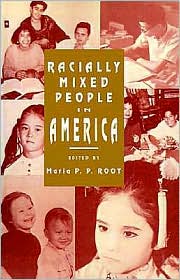In Mixed Company: Multiracial academics, advocates and artists gather for Hapa Japan ConferencePosted in Articles, Asian Diaspora, Identity Development/Psychology, Media Archive, United States on 2012-05-15 21:37Z by Steven |
In Mixed Company: Multiracial academics, advocates and artists gather for Hapa Japan Conference
Nichi Bei: A mixed plate of Japanese American News & Culture
2011-05-26
Alec Yoshio MacDonald, Nichi Bei Weekly Contributor
As a graduate student in UCLA’s psychology department during the late 1970s, Christine Iijima Hall absorbed scathing criticism about her dissertation. Fellow academics dismissed her project as “a ridiculous piece of research,” she said, and newspapers declined to publicize her need for study participants based on the belief that she was covering a “stupid topic.” Few people, apparently, saw any worth in exploring the identity formation of individuals from mixed black and Japanese backgrounds.
Coming from such a background herself, Hall remained undeterred in pursuing the subject. In part, she was motivated to counteract existing literature that painted a disturbing portrait of those like her—in essence, that “we were insane, that there was something wrong with us, we never knew what we wanted, and we killed ourselves.” The studies that yielded these alarming conclusions were flawed, she explained, because they tended to focus on institutionalized patients instead of average folks. By delving into the everyday mixed race experience, she knew she could reveal a more compelling story deserving of attention.
In her effort to reframe an issue so widely ignored and narrowly interpreted, Hall ended up producing one of the pioneering works of an emerging discipline. At that time “‘multiracial’ was not a word yet,” she recalled, but thanks in no small measure to her perseverance, the field of multiracial studies exists today.
Scholars in the field recently had the chance to reflect on the past, present and future of their discipline when they came together April 8 and 9 for the Hapa Japan Conference. Held primarily on the campus of UC Berkeley and hosted by the university’s Center for Japanese Studies, it showcased a range of both foundational and current projects concerning multiraciality. As Hall pointed out while revisiting her dissertation for a session called “A Changing Japanese-American Community,” the conference also served as “a reunion for many of us who have done mixed race research.”…
Read the entire article here.
